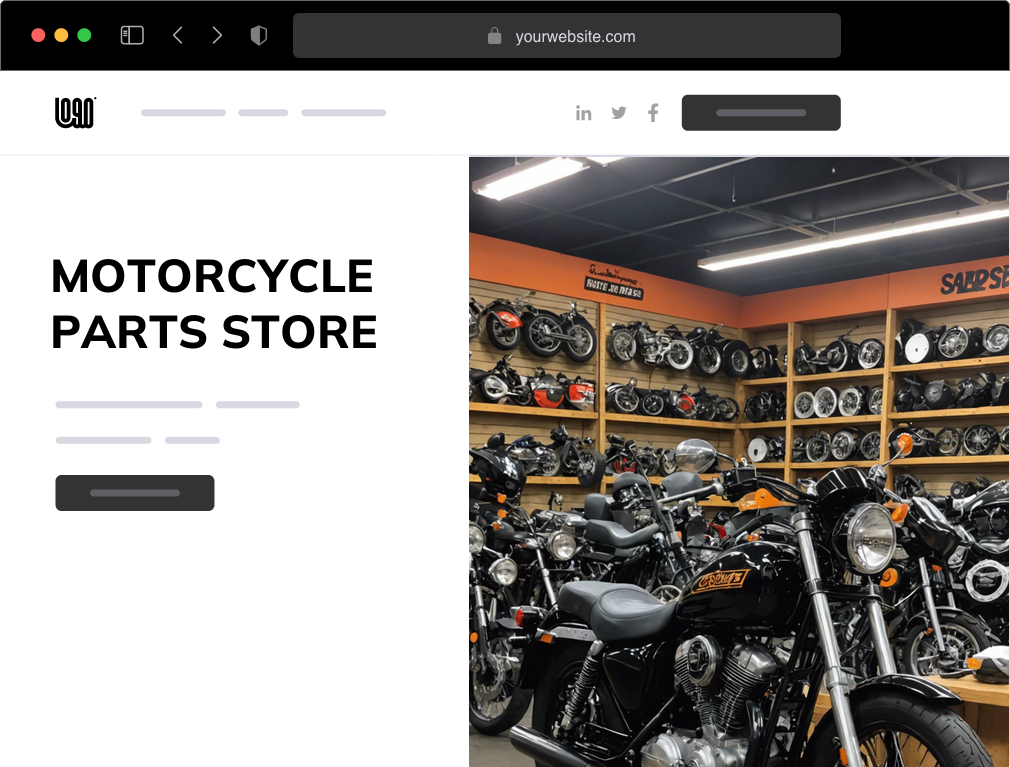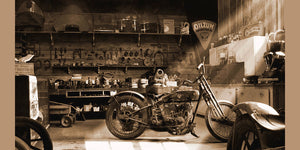Explore the Latest Motocross Gear NZ for each Degree of Rider
Explore the Latest Motocross Gear NZ for each Degree of Rider
Blog Article
Understanding the Crucial Parts of a Motorcycle: A Comprehensive Guide for Enthusiasts
For motorcycle enthusiasts seeking to boost their riding experience and ensure their bikes run efficiently, comprehending the necessary parts of a motorcycle is extremely important. Each aspect, from the engine's detailed workings to the vital duty of the stopping systems, not only affects performance however additionally safety and security and comfort. This guide will certainly go through the basic components that every motorcyclist must be familiar with, making it possible for educated selections in both maintenance and possible upgrades. As we begin this exploration, one must ask: how does each element engage to produce the smooth adventure every enthusiast seeks?
Engine Components

The camshaft plays a critical role in managing the timing of the engine's valves, guaranteeing the specific opening and closing required for efficient gas and air consumption, as well as exhaust expulsion. This timing is important to maintaining optimum engine performance and effectiveness. In addition, the carburetor or fuel injection system, relying on the motorcycle model, is accountable for mixing air with fuel in the correct proportion for combustion.
The cooling system, either air or liquid-based, works to preserve the engine's temperature within operational limits, avoiding overheating and making certain long life - motorbike shop. Each part, diligently designed and integrated, adds to the smooth operation of the engine, specifying the motorcycle's power output and total efficiency
Transmission System
Integral to the bike's functionality, the transmission system makes sure reliable power transfer from the engine to the wheels. This system comprises several important parts, consisting of the clutch, gearbox, and last drive, each playing an essential duty in translating the engine's power into activity. The clutch, commonly run by a hand bar, offers to disengage the engine and engage from the transmission, allowing for smooth gear changes and regulated acceleration.
The gearbox, commonly referred to as the transmission proper, contains a set of equipments that bikers can by hand shift through to adjust the bike's speed and torque result. These gears are arranged in a sequence that enables the bike to accelerate smoothly and keep optimal engine performance across different rates. The majority of bikes utilize a consecutive transmission, calling for the motorcyclist to change gears in a predetermined order.
Braking Devices
While recognizing the transmission system is vital to utilizing a motorbike's power, just as vital is the ability to regulate and stop that power effectively, which is where braking devices come right into play. Brakes are critical for security and efficiency, supplying the cyclist with the essential control to browse various terrains and problems. Typically, motorbikes feature 2 kinds of braking systems: disc brakes and drum brakes.
Disc brakes are more prevalent in modern-day bikes because of their premium efficiency. They include a brake disc, caliper, and pads. When turned on, the caliper squeezes the brake pads against the rotating disc, transforming kinetic power into warm, thus reducing the wheel. This system uses far better heat dissipation, regular efficiency, and improved quiting power, especially in damp conditions.
Alternatively, drum brakes, though less typical, are still found in some bikes. They work by pushing brake footwear versus the inner surface area of a drum affixed to the wheel. While usually less reliable in warm dissipation and stopping power, drum brakes are simpler and extra cost-effective.
Comprehending these braking systems' nuances allows riders to preserve their motorcycles correctly and appreciate the engineering that makes sure efficient and safe quiting.
Suspension and Steering
Suspension and guiding systems are crucial parts that substantially affect a motorcycle's handling and experience comfort. The suspension system, consisting of forks at the front and shock absorbers at the back, absorbs road irregularities, enhancing security and control. Front forks, inverted or typically telescopic, compress and rebound to alleviate impacts, while rear shock absorbers keep tire read the full info here call with the road, critical for grip and security.
Steering, centered around the handlebars, links the cyclist to the bike's directional control. The guiding head bearings make sure smooth operation, allowing precise ability to move. Appropriate placement and maintenance of these bearings are vital for predictable guiding feedback and minimizing biker exhaustion.
The suspension's adjustability is an additional crucial aspect; preload, damping, and rebound setups enable customization to match different riding conditions and designs. This versatility is necessary for optimizing performance, whether browsing metropolitan streets or taking on rugged trails. Technologies like digital suspension systems provide go real-time modifications, enhancing adventure high quality throughout varied terrains.

Electric Systems
After making certain a smooth and controlled adventure through effective suspension and guiding systems, focus transforms to the electrical systems, an essential aspect of modern motorcycles. These systems play a critical duty not only in starting the engine yet additionally in powering numerous elements that improve the functionality and safety of the bike.
At the heart of a motorcycle's electrical system is the battery, which shops electrical energy necessary for beginning the engine and powering supporting systems - motorbike shop. The generator or generator, coupled with the rectifier-regulator, guarantees the battery remains charged while the motorbike is in operation, transforming power into electric power and keeping voltage levels
The ignition system, an additional vital part, is accountable for sparking the air-fuel mix in the engine's cyndrical tubes. Modern motorbikes typically make use of a digital ignition system, supplying greater performance and reliability compared to conventional systems.
Lighting systems, including fronts lights, tail lights, and signs, are likewise essential, ensuring presence and safety for the biker. Extra electronic elements such as sensors, control systems, and displays add to advanced functions like gas shot administration, anti-lock braking systems (ABS), and electronic try this web-site control panels, better boosting the riding experience.
Final Thought
An extensive comprehension of a motorcycle's vital parts, including the engine, transmission system, stopping systems, suspension, guiding, and electric systems, is vital for lovers intending to enhance security, performance, and convenience. Mastery of these components enables educated decisions regarding maintenance and upgrades, inevitably improving the riding experience. By incorporating this understanding, bikers can guarantee their motorbikes run at peak performance and integrity, consequently optimizing both enjoyment and durability of their cars.
For bike fanatics looking to elevate their riding experience and guarantee their bikes run smoothly, understanding the crucial components of a motorbike is vital.Integral to the bike's performance, the transmission system ensures efficient power transfer from the engine to the wheels.While understanding the transmission system is vital to utilizing a motorcycle's power, similarly essential is the capacity to regulate and stop that power properly, which is where braking mechanisms come right into play. Usually, motorcycles include two types of braking systems: disc brakes and drum brakes.
A complete understanding of a motorcycle's vital elements, consisting of the engine, transmission system, braking devices, suspension, steering, and electrical systems, is vital for lovers intending to enhance efficiency, safety and security, and convenience.
Report this page